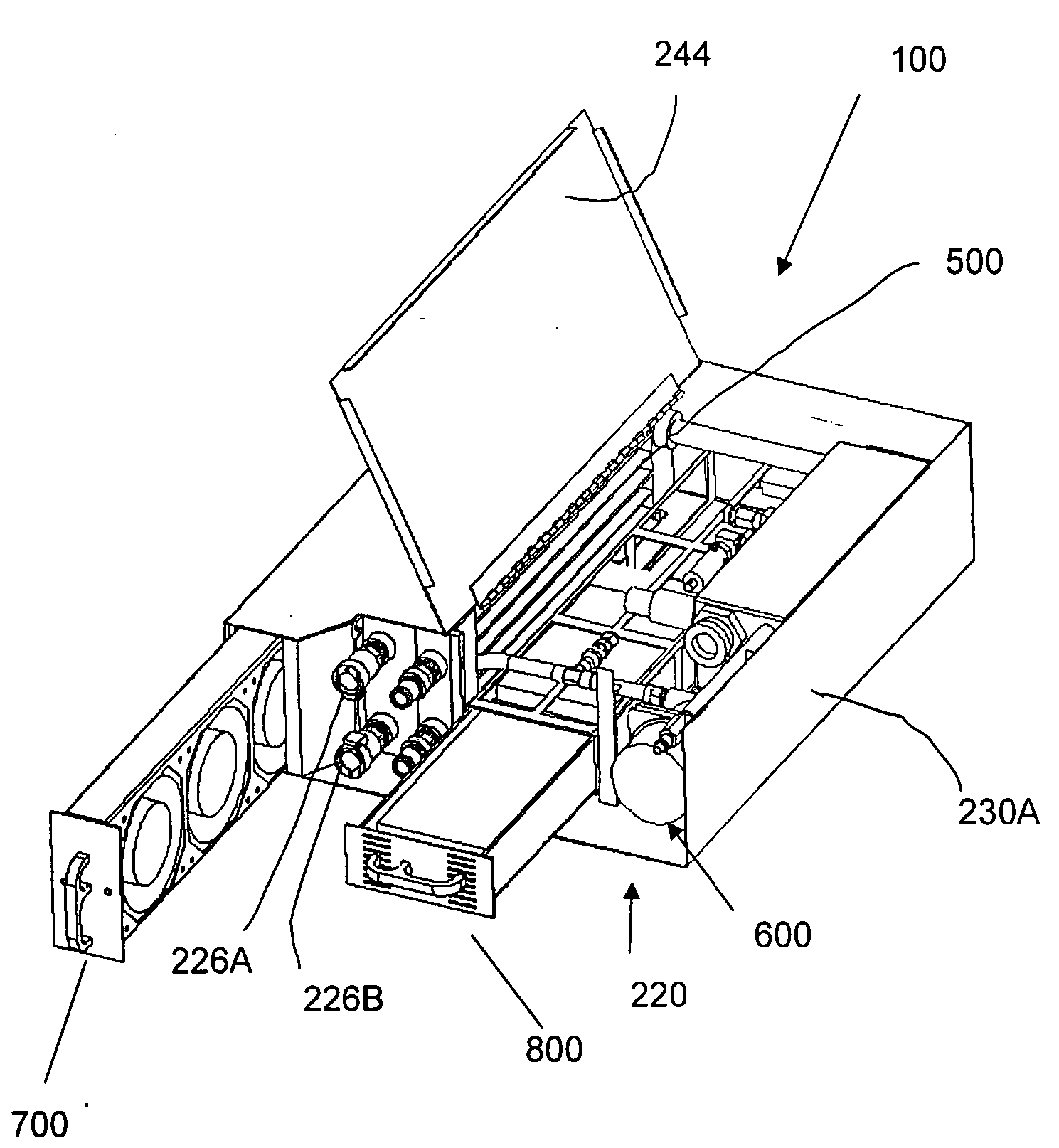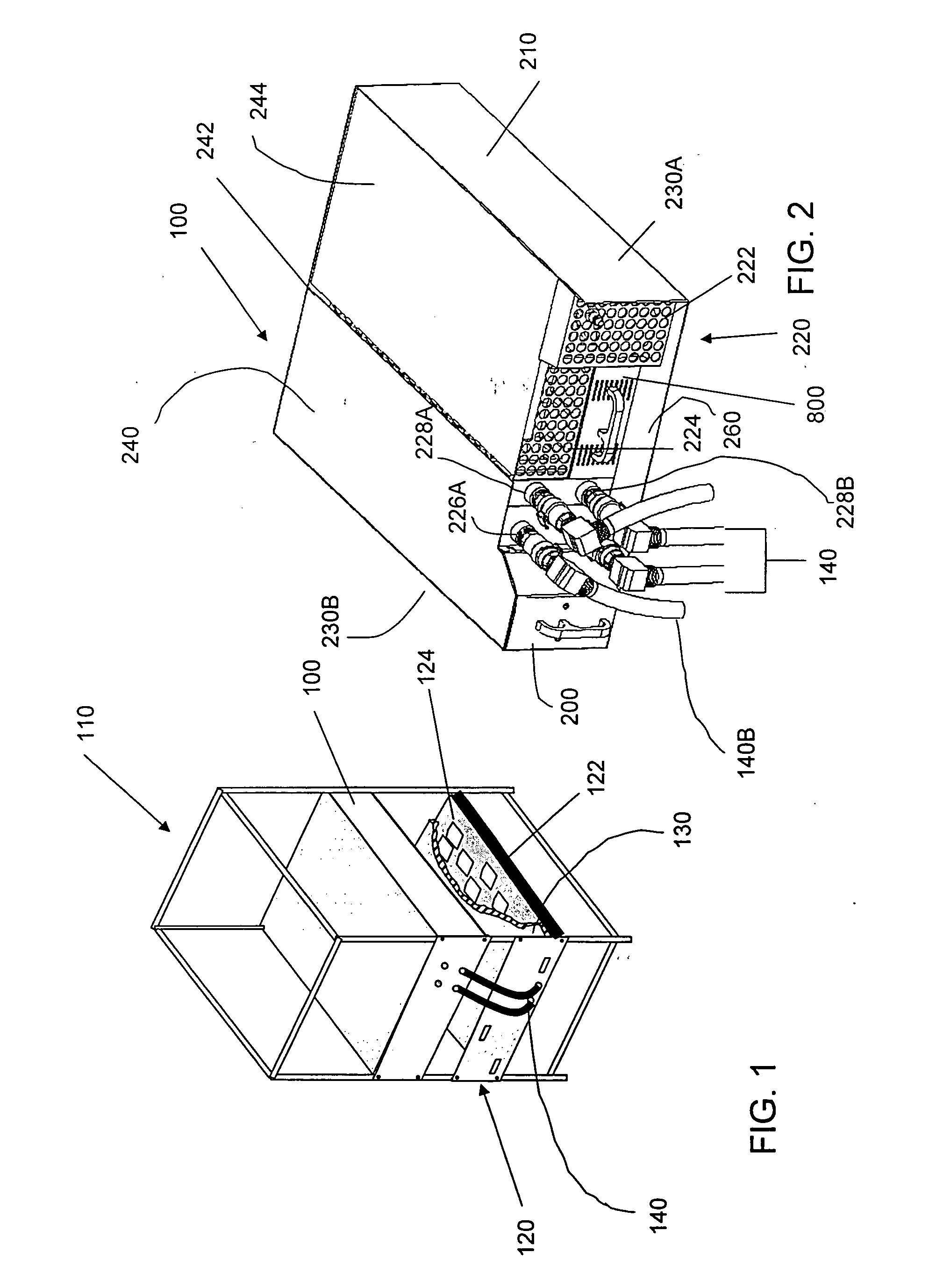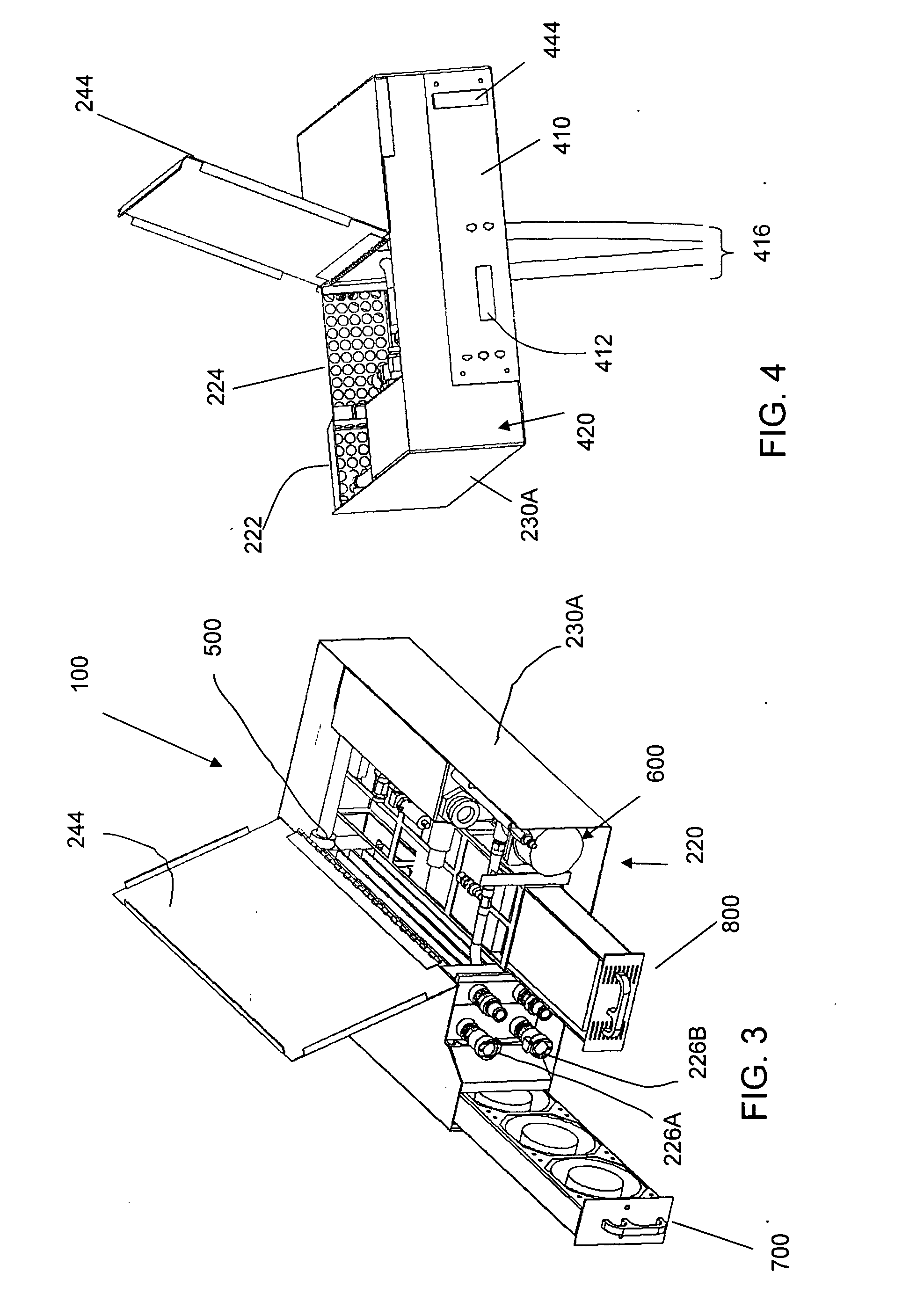Modular rackmount chiller
a rackmount chiller and module technology, applied in the field of electronic assemblies, can solve the problems of limited cooling capacity, difficult access to the rackmount multi-board chassis or sub-assembly, and the general requirement of electrical power for more powerful electronics, so as to achieve the effect of convenient access or removal
- Summary
- Abstract
- Description
- Claims
- Application Information
AI Technical Summary
Benefits of technology
Problems solved by technology
Method used
Image
Examples
case 210
[0034] Case 210 has a face 220. In a preferred embodiment, all access to chiller assembly 100 will be made through face 220 during normal operation of chiller assembly 100.
[0035] Pump cover 222 may be removed to provide access to pump and motor assembly 600, which is described in greater detail below in connection with FIG. 6. Power supply tray assembly 800 may be removed through face 220. Power supply tray 800 is described in greater detail below in connection with FIG. 8.
[0036] Fluid outlets 228A and 228B provide a connection to two cold plates. Here fluid outlet 228B is shown connected to one of the hoses 140. Fluid inlets 226A and 226B provide a return path for the connections to cold plates.
[0037] Fan assembly 700 may also be removed from chiller assembly 100 through face 220. Fan assembly 700 is described below in greater detail in connection with FIG. 7.
[0038] Cover 224 covers remaining space in face 220. In the preferred embodiment cover 224 is made of a perforated metal....
PUM
 Login to View More
Login to View More Abstract
Description
Claims
Application Information
 Login to View More
Login to View More - R&D
- Intellectual Property
- Life Sciences
- Materials
- Tech Scout
- Unparalleled Data Quality
- Higher Quality Content
- 60% Fewer Hallucinations
Browse by: Latest US Patents, China's latest patents, Technical Efficacy Thesaurus, Application Domain, Technology Topic, Popular Technical Reports.
© 2025 PatSnap. All rights reserved.Legal|Privacy policy|Modern Slavery Act Transparency Statement|Sitemap|About US| Contact US: help@patsnap.com



